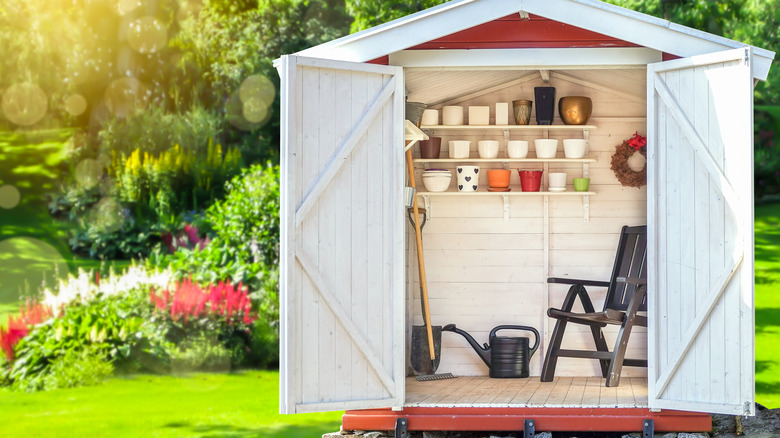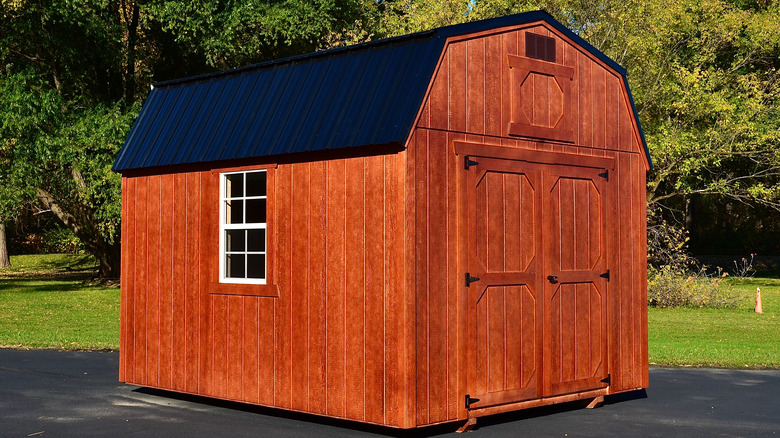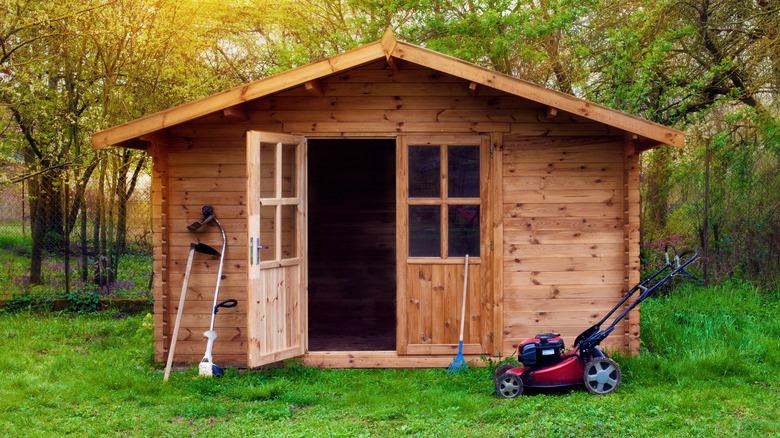Avoid This Garden Shed Mistake If You Don't Want Rotting Wood On Your Hands
Although garden sheds can be very useful to have at home, they can get damaged easily if you don't take steps to protect them. There are both pros and cons to a wood shed. Unfortunately, they are vulnerable to rotting, warping, and mold, so you need to take steps to prevent moisture. Failing to protect your shed from moisture is a big mistake.
When installing a shed in your garden, you should ensure that you start off on the right foot. You need to install your shed correctly. Be sure that it's elevated from the ground to prevent damage from ground moisture and reduce the chance that pests such as termites and carpenter ants will access the shed. Elevating the shed will add more air circulation and reduce excess moisture, helping to protect the bottom of your shed. Adding a sturdy concrete base or a base made from another material can help your shed stay in better shape too. Other than installing the shed correctly, there are also other ways to waterproof it and ensure it stays as free from moisture as possible.
Basic ways to prevent moisture in your garden shed
There are various ways to help prevent moisture from damaging your shed. First of all, make sure to clear your gutters and keep them free from debris. If your shed doesn't have gutters, you may want to install some to help protect it from moisture.
Remove any plants and greenery that are very close to the shed. Plants will naturally bring moisture to them and closer to the shed at the same time.
Another important thing to do is to check for gaps in the doors and windows of your shed. If there are any gaps where air and moisture are getting in, consider using sealant, caulk, or foam to seal up cracks and prevent the transfer of moisture and air.
Finally, consider waterproofing the wood by applying a wood preservative to the walls of your shed to help prevent moisture and keep the shed sealed. At a minimum, you should re-apply a wood preserver every year to ensure it will keep doing its job and protect your shed from moisture and damage.
Upgrading your shed to keep it safe from moisture
Making some additions to your shed is recommended if you want to keep it in the best shape possible and ensure it stays dry. Consider installing shed insulation to help maintain the temperature inside and reduce the chances that moisture will cause damage.
You should also be sure to check the roof regularly and make sure that it stays in good condition. Consider adding waterproofing materials to the roof. Adding roofing felt to the roof is a great idea. You'll need to continue patching and replacing the felt on your roof as needed. Fortunately, this is easily done. If your roof has shingles, you may also need to repair and replace them as time goes on.
Adding more ventilation to the shed can also be helpful — if you do it correctly. You may want to install vents on your shed to prevent the buildup of moisture and allow it to escape. This will help to protect your shed from rotting and damage.



